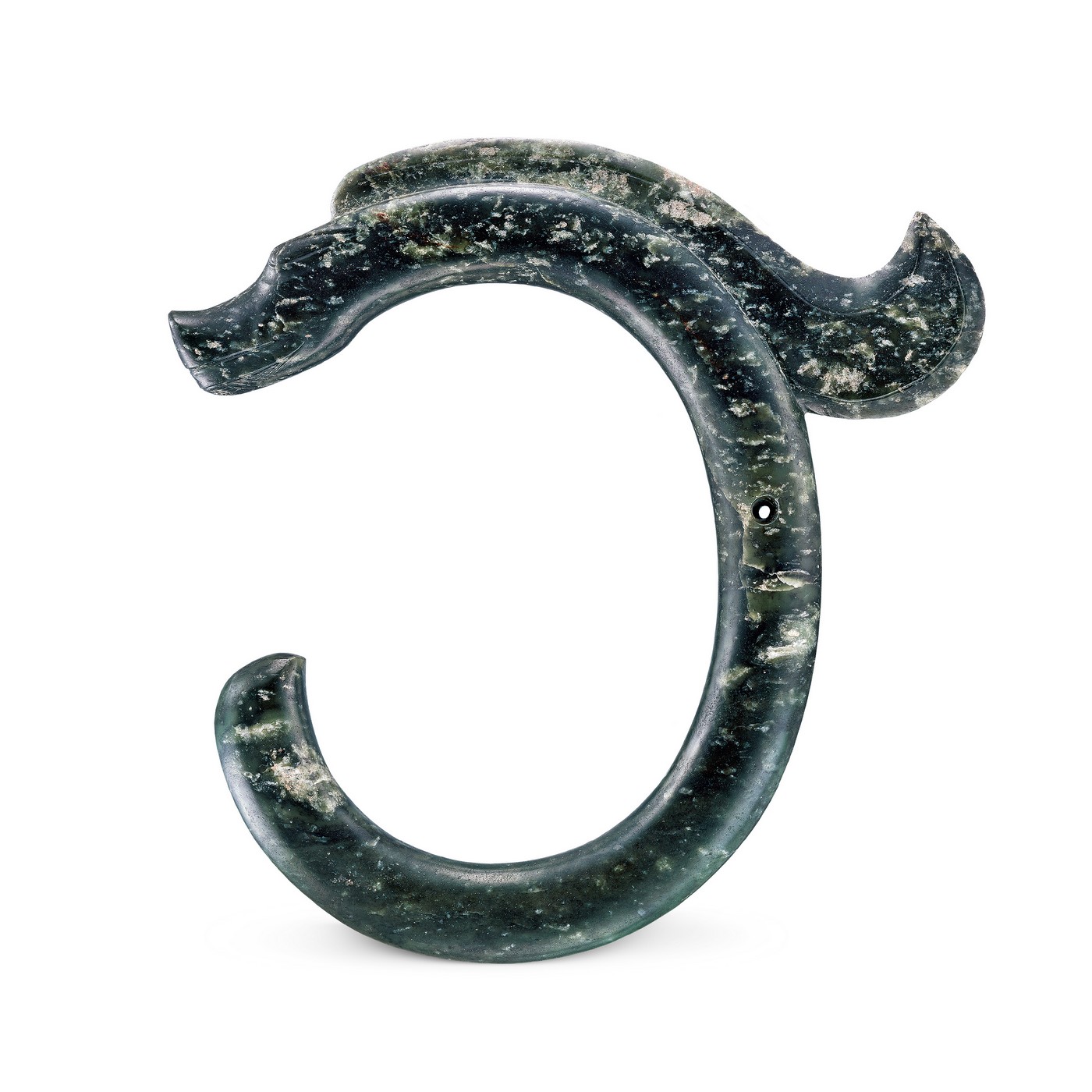Timeline of Chinese Sculptures
History and representative works of sculpture
Prehistoric sculpture (6500 to 1600 BC)
The earliest traces of Chinese sculpture date back to the prehistoric era, where pottery figurines served both practical and aesthetic purposes. These sculptures, often featuring animals and crude representations of humans, demonstrate an early mastery of form and a profound connection to daily life.
The Jade Dragon is one of the representatives. Five thousand years ago, humans created the Hongshan culture. It was a time when man and nature faced each other directly, when life, hearts, as well as imagination without distractions were expressed and transmitted in their hands. It is made of blackish-green jade and exquisitely carved and polished, about 26 cm high. Unearthed in 1973 at the Sanxingtala site in Ongniud Banner, Inner Mongolia Autonomous Region, this jade carving is of high artistic value.

Shang and Zhou sculpture (1600 to 256 BC)
The sculptures in the Shang and Zhou dynasties focused on the modeling of utensils, ornaments, and figures in the shape of animals. They were small in size, roughly shaped, and had a strong human touch. The art of bronze ware represented the highest level of sculpture in the Shang and Zhou Dynasties. Sanxingdui bronze figure statues were the representations.
The Bronze Human Head was made in the Shang Dynasty (1600 to 1046 BC) and unearthed in 1986 at the Sanxingdui site, Sichuan Province in Southern China. The face is square, rough, and expressionless, with two wide-open eyes, a broad high-bridged nose, and a mouth tightly shut. There is a hole in the lower part of each ear so the bronze head could wear earrings.
Qin and Han sculpture (221 BC to AD 220)
The Qin and Han dynasties marked a pivotal moment in the history of Chinese sculpture. With a heightened emphasis on realism, sculptors captured the vitality and power of their subjects, particularly in monumental works like the Terracotta Army. These sculptures stand as testament to the ambition and military prowess of the era.
The Terracotta Army stands as one of the most awe-inspiring archaeological discoveries and wonders of the world. These terracotta statues, made from clay and baked at high temperatures, vary in rank, from high-ranking generals with intricate armor and detailed facial features to common soldiers with simpler attire.
Wei, Jin, Southern, and Northern Dynasties sculpture (AD 220 to 589)
During the Wei, Jin, Southern, and Northern Dynasties, Buddhism flourished, leading to a proliferation of religious sculpture. The caves and grottoes of this period, such as the Mogao Caves and the Yungang Grottoes, showcase exquisite Buddhist imagery that combined Indian, Central Asian, and Chinese artistic traditions.
The Mogao Caves, also known as the Thousand Buddha Grottoes, are located in Dunhuang, Gansu Province. Among the 1000-plus caves at the Mogao Caves, 492 are adorned with murals and painted sculptures, while over 500 feature murals exclusively. Often boasting grand compositions and vivid colors, these murals depict mainly Buddhist stories alongside depictions of landscapes, pavilions, towers, flowers, birds and insects.
Sui and Tang sculpture (AD 581 to 907)
The Sui and Tang dynasties represented the golden age of Chinese art, including sculpture. This era witnessed the creation of magnificent religious statues and tomb figures, as well as the development of the iconic Tang Tri-color ceramics. In the Tang Dynasty, the Tang tri-color glazed pottery prevailed. It was made by adding metallic oxides to the colored glaze and calcining the object to create different colors.
The Tri-color Ceramic Horse is white and has a saddle covered with a dark green blanket. Both its breast and hindquarters are ornamented with belts strung with yellow flowers, from which hang golden bells.
The colors contrast strikingly. Strong and vigorous in build, true to life in form, the pottery is a vivid miniature representation of a powerful saddle horse owned by some high official or nobleman of Prime Tang.
Song and Yuan sculpture (AD 960 to 1368)
The Song and Yuan dynasties saw a further secularization of religious sculpture, with figures becoming more relatable and grounded in human experience. The rise of brick sculpture during the Yuan Dynasty documented daily life and customs, adding a new dimension to the art form.
The Song Dynasty Wooden Guanyin Statue is crafted from high-quality wood, often selected for its durability and beauty of grain. The artist has meticulously carved every detail, from the delicate folds of her robes to the intricate patterns adorning her garments.
Ming and Qing sculpture (AD 1368 to 1912)
In the Ming and Qing dynasties, religious sculpture lost some of its creative spark due to waning religious fervor. However, secular sculpture flourished, often taking on decorative and craft-oriented forms. Despite this, works from this period still display a remarkable attention to detail and a deep understanding of form and material.
The sculptures adorning the Ming Tombs, also known as the Ming Shisanling or the Thirteen Tombs, are a testament to the exquisite craftsmanship and cultural heritage of the Ming Dynasty. The most prominent feature among these sculptures is the life-size stone statues, known as Shishou or stone guardians, that flank the entranceways of each imperial tomb. These stone statues, usually in pairs, depict fierce warriors or animals, such as lions or elephants, meant to guard the tombs against evil spirits and protect the emperor's resting place. Each guardian is meticulously carved, with intricate details in their armor, facial expressions, and postures, conveying a sense of power and solemnity.
